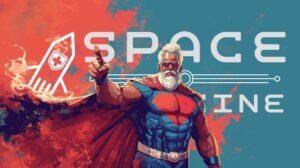Introduction to Regenerative Medicine and Its Potential in Medical Treatments
Regenerative medicine has emerged as a groundbreaking field, offering innovative therapies that harness the body’s own repair mechanisms to heal damaged tissues and organs. With the FDA’s stringent approval process ensuring safety and efficacy, several regenerative therapies have made their way to the market, providing new hope for patients across various medical conditions. Let’s delve into three such FDA-approved therapies: Carticel, Laviv, and Celution, exploring their applications, benefits, and considerations.
Understanding Carticel: An FDA-Approved Regenerative Therapy for Cartilage Repair
Overview of the Therapy
Carticel, a therapy utilizing autologous chondrocytes, has been a breakthrough in treating focal articular cartilage defects, especially in the knee. It involves harvesting chondrocytes from the patient, expanding them ex vivo, and implanting them into the injury site.
Mechanism of Action
The implanted chondrocytes facilitate the regeneration of the cartilage, providing a biological solution to repair the defect and restore functionality.
Clinical Applications and Success Stories
Carticel has been pivotal in treating patients, especially athletes, who have experienced cartilage damage, aiding them in returning to their active lifestyles. It is prominently used to treat articular cartilage injuries, especially in the knee, which can be caused by trauma, repetitive use, or degenerative conditions. It is particularly beneficial for patients who have not responded well to other interventions like physical therapy or arthroscopic debridement.
Patients experiencing persistent joint pain, swelling, and limited mobility due to cartilage damage may be candidates for Carticel therapy. It provides a therapeutic option to alleviate pain and enhance joint function, especially in cases where conservative treatments have failed.
By facilitating the regeneration of native-like cartilage, Carticel helps in preserving the integrity of joints, potentially delaying or preventing the onset of osteoarthritis and avoiding the need for joint replacement surgery in younger patients.
Athletes Returning to Play
Numerous athletes have benefited from Carticel therapy, returning to their respective sports after recovering from cartilage injuries that could have otherwise sidelined their careers. The therapy has enabled them to regain optimal joint function and continue with high-impact activities
Improved Quality of Life for Active Individuals
Many individuals, beyond athletes, who lead active lifestyles and have encountered cartilage injuries, have experienced significant improvements in their quality of life after undergoing Carticel therapy. They have reported reduced pain, enhanced mobility, and the ability to engage in activities they love, such as hiking, cycling, and running.
Avoiding More Invasive Procedures
For some patients, Carticel has provided a viable alternative to more invasive procedures like joint replacement. By addressing cartilage damage early and effectively, this therapy has allowed patients to maintain their natural joint and avoid or delay the need for prosthetic joint implantation.
A Case in Point
One notable case involves a professional basketball player who suffered a significant knee injury, jeopardizing his career. After undergoing Carticel therapy, he was able to return to professional play, showcasing the potential of ACI in facilitating effective cartilage repair and enabling athletes to resume their careers post-injury.
Safety Considerations and Side Effects
While Carticel presents a promising approach, considerations like the invasiveness of the procedure, potential for overgrowth of the implanted cells, and the cost-effectiveness compared to alternative treatments like microfracture need to be evaluated.
Exploring Laviv: A Regenerative Treatment for Facial Rejuvenation
Overview of the Therapy
Laviv employs autologous fibroblasts, injected to improve the appearance of nasolabial fold wrinkles, offering a personalized aesthetic treatment.
How Laviv Works
Fibroblasts, responsible for producing collagen, are extracted, cultured, and then injected into the wrinkle sites, promoting natural collagen production and reducing the appearance of wrinkles
Mitigating Nasolabial Fold Wrinkles
Laviv has been particularly effective in reducing the appearance of nasolabial fold wrinkles, which are the lines that run from the sides of the nose to the corners of the mouth. By utilizing a patient’s own fibroblasts, Laviv stimulates the production of collagen, gradually reducing the prominence of these wrinkles.
Enhancing Skin Texture and Elasticity
The therapy is also explored for its potential to enhance skin texture and elasticity. The collagen produced as a result of Laviv therapy contributes to improved skin firmness and a reduction in fine lines, offering a naturally rejuvenated appearance.
Addressing Scarring and Skin Damage
While primarily known for its wrinkle-reducing capabilities, Laviv is also being explored for its potential to address scarring and other forms of skin damage by leveraging the natural healing and regenerative capabilities of fibroblasts.
Success Stories
Natural Facial Rejuvenation
Numerous individuals have turned to Laviv as an alternative to traditional fillers, seeking a more natural approach to facial rejuvenation. Patients have reported a noticeable reduction in nasolabial fold wrinkles and an overall improvement in skin quality, attributing to a fresher and more youthful appearance.
Long-Lasting Results
Some patients have highlighted the long-lasting results achieved with Laviv, noting sustained improvements in skin texture and wrinkle reduction as compared to traditional fillers, which typically require more frequent treatments.
Enhanced Confidence and Satisfaction
Beyond the physical results, many patients have expressed enhanced confidence and satisfaction with their appearance post-Laviv treatment, underscoring the positive psychological and emotional impacts of the therapy.
A Case in Point
One remarkable case involves a woman in her late 50s who, after undergoing Laviv therapy, experienced a significant reduction in nasolabial fold wrinkles and an overall improvement in skin texture and elasticity. The patient reported not only physical improvements but also expressed enhanced self-confidence and satisfaction with the more natural-looking results as compared to previous experiences with synthetic fillers.
Risks and Possible Complications
Though generally considered safe, potential risks like allergic reactions, bruising, and swelling at the injection site, and the longevity of the results versus other aesthetic procedures need to be considered.
Delving into Celution: An Innovative Regenerative Therapy for Tissue Regeneration
Introduction to Celution Therapy
Celution is a medical device that extracts cells from adipose tissue derived from liposuction, providing a source of regenerative cells for various applications.
Soft Tissue Repair and Regeneration
Celution has been utilized to facilitate soft tissue repair and regeneration, providing a therapeutic option for patients experiencing tissue damage or loss due to injury, surgery, or degenerative conditions.
Wound Healing
The system has demonstrated efficacy in enhancing wound healing, particularly in cases of chronic wounds or wounds that are slow to heal, by providing concentrated regenerative cells that can facilitate tissue repair and regeneration.
Cosmetic and Aesthetic Procedures
In the realm of aesthetic medicine, Celution has been explored for its potential to enhance outcomes in cosmetic and reconstructive procedures by providing autologous cell-enriched fat grafts.
Orthopedic and Musculoskeletal Applications
The use of adipose-derived regenerative cells in orthopedic and musculoskeletal applications, such as in the treatment of osteoarthritis or to facilitate bone and joint healing, is also being explored.
Success Stories
Enhanced Recovery in Soft Tissue Repair
Patients undergoing soft tissue repair have experienced enhanced recovery and improved outcomes when treated with regenerative cells derived using the Celution system, showcasing its potential to optimize healing and tissue regeneration.
Improved Wound Healing Outcomes
Individuals with chronic or non-healing wounds have witnessed improved healing outcomes with the application of adipose-derived cells, providing a viable therapeutic option where traditional treatments may have fallen short.
Augmented Results in Aesthetic Procedures
In cosmetic and reconstructive procedures, the use of autologous cell-enriched fat grafts has provided augmented results, enhancing the longevity and quality of the outcomes in aesthetic interventions.
A Case in Point
One notable case involves a patient who experienced a significant improvement in the healing of a chronic wound following treatment with adipose-derived regenerative cells obtained using the Celution system. The patient, who had struggled with traditional wound care approaches, witnessed a marked acceleration in wound healing and a reduction in associated symptoms, underscoring the potential of Celution in managing challenging wound care cases.
Conclusion
In the intricate tapestry of medical advancements, Carticel, Laviv, and Celution emerge as three distinct threads, weaving a narrative that transcends traditional therapeutic boundaries and heralds a new era in regenerative medicine. Each therapy, with its unique applications and success stories, not only signifies a monumental stride in addressing specific medical challenges but also exemplifies the boundless potential that lies within the realm of cellular therapies and regenerative medicine.
Carticel, with its innovative approach to cartilage repair, Laviv, as a harbinger of natural facial rejuvenation, and Celution, with its versatile applications across various medical disciplines, collectively underscore a pivotal message: the future of medicine is not merely in treating conditions but in regenerating, restoring, and revitalizing our biological systems.
As we stand on the precipice of medical innovation, these therapies offer more than just solutions; they offer a glimpse into a future where healing is optimized, where the regenerative capabilities of our own cells are harnessed to enhance therapeutic outcomes, and where the boundaries of what is medically possible are continually expanded.
In a world where medical challenges are ever-evolving, the exploration and adoption of regenerative therapies become paramount. Carticel, Laviv, and Celution serve as beacons, illuminating the path towards a future where the convergence of science, technology, and medicine orchestrates a symphony of healing, hope, and unparalleled possibilities.
General Reference for All Therapies:
Mao, A. S., & Mooney, D. J. (2015). Regenerative medicine: Current therapies and future directions. Proceedings of the National Academy of Sciences of the United States of America, 112(47), 14452–14459. Read More
Specific References: Carticel:Genzyme Biosurgery. (2022). Carticel® (Autologous Cultured Chondrocytes). Visit Website Peterson, L., Minas, T., Brittberg, M., Nilsson, A., Sjögren-Jansson, E., & Lindahl, A. (2000). Two- to 9-year outcome after autologous chondrocyte transplantation of the knee. Clinical Orthopaedics and Related Research, (374), 212-234. Read More
Laviv:Fibrocell Science, Inc. (2022). LAVIV® (Azficel-T). Visit Website Smith, S. R., Munavalli, G., Weiss, R., Maslowski, J. M., Hennegan, K. P., Novak, J. M., & Hardas, B. (2012). A multicenter, double-blind, placebo-controlled trial of autologous fibroblast therapy for the treatment of nasolabial fold wrinkles. Dermatologic Surgery, 38(7 Pt 1), 1234-1243. Read More Celution:Cytori Therapeutics, Inc. (2022). Celution® System. Visit Website Fraser, J. K., Wulur, I., Alfonso, Z., & Hedrick, M. H. (2006). Fat tissue: an underappreciated source of stem cells for biotechnology. Trends in Biotechnology, 24(4), 150-154. Read More





